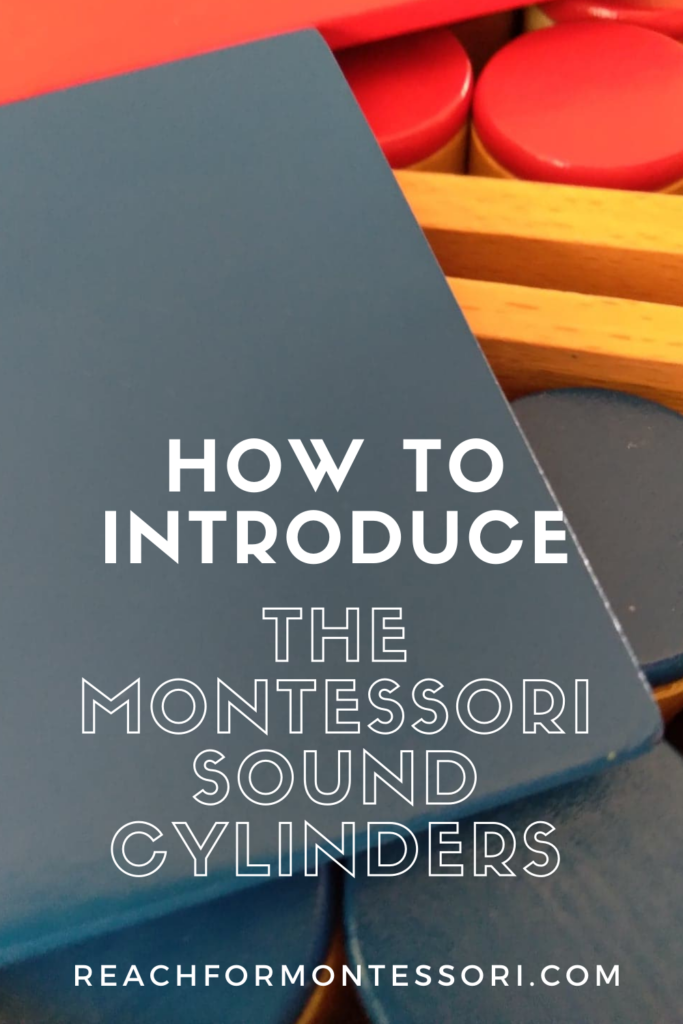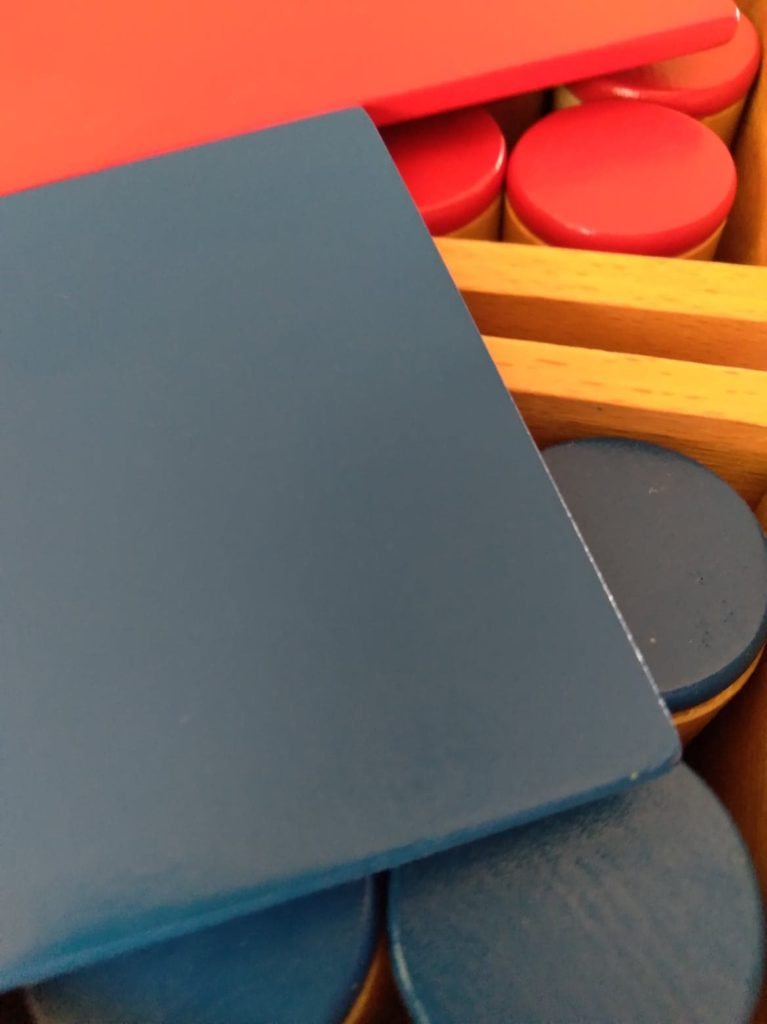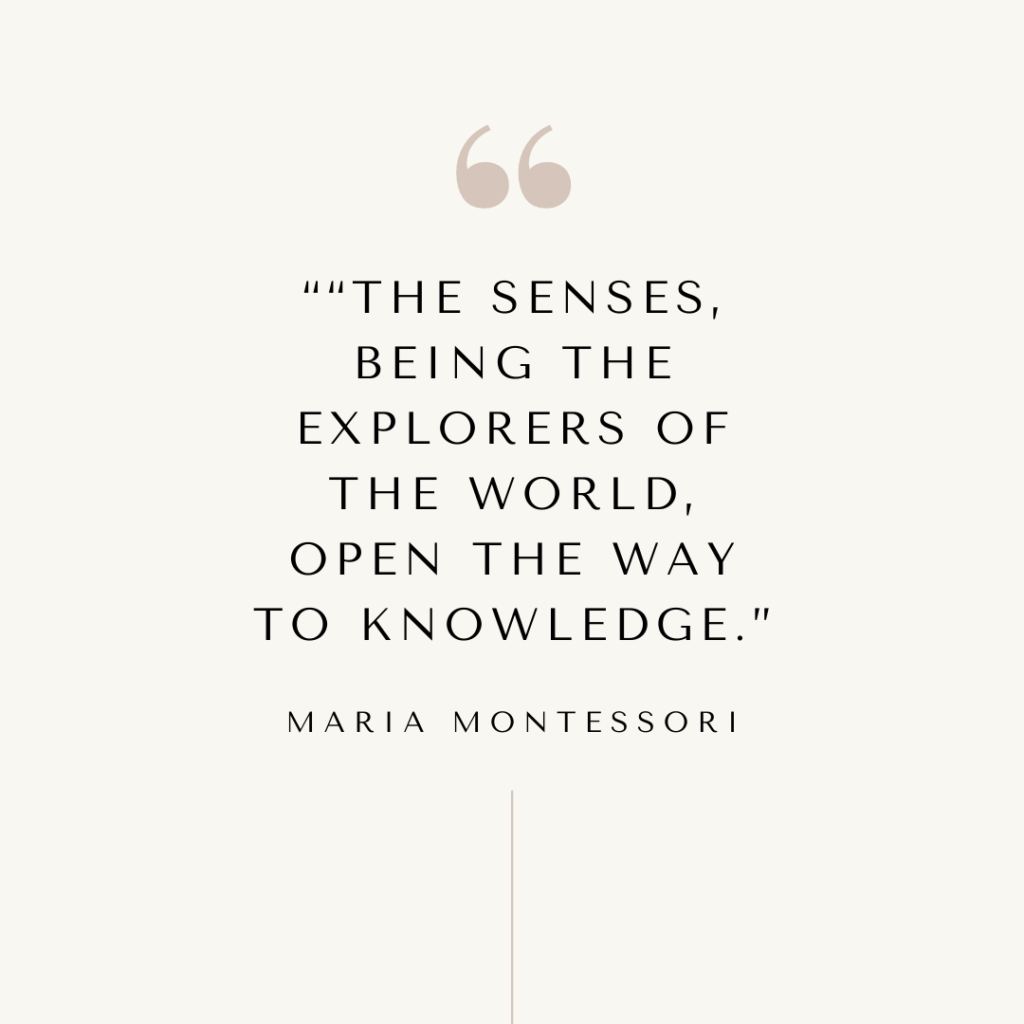In this post, I'm going to be talking about the Montessori Sound Cylinders. I'll go over what they are and how to present them.
So, let's get right to it.
What are the Montessori Sound Cylinders?
The Montessori Sound Cylinders are a traditional Montessori sensorial material presented in the primary age group.
The cylinders come in a set of 2 boxes containing 6 cylinders each.
The cylinders are color-coded red and blue for pairing. Each Montessori Sound Cylinder contains beads of varying sizes and amounts.
The sound each cylinder makes is a result of these factors.
Since this is a pairing activity, there will be a red cylinder that makes the same sound as each blue cylinder.
Stickers or markings on the bottom serve as the control of error for the children, making it so this activity can be done independently following the initial presentation.
This activity should be presented in a quiet environment.
Parents or teachers should arrange the cylinders in their boxes so they know which are loudest and which are quietest.
(This post contains affiliate links. Purchasing from these links costs you nothing extra, but sends a few cents our way for website upkeep.)

How to present the Montessori Sound Cylinders
Aim of activity
- discrimination between sounds and volume levels
Indirect aim
- Montessori Sensorial Materials and Activities-Sound…
- Purpose:To Develop Sensitivity Of the Auditory Sense.
- This Sound Boxes Set is with 6 different sound,Match Sound…
Vocabulary
- quiet, quieter, quietest
- loud, louder, loudest
Points of interest
- The sound of the cylinders
- The difference in sensations when shaken

Montessori Sound Cylinders presentation
The presentation of the Montessori Sound Cylinders begins with introducing only the loudest pair and the quietest pair.
Again, it is important to have the cylinders arranged so that you know where to start.
Presentation part 1
- Carry one box of Sound Cylinders to a table while your child carries the other and place both boxes to the left side, removing both lids.
- Say that you are going to match the cylinders by their sounds.
- Take the loudest red cylinder out of the box shake it to your right ear, holding it by your fingertips and holding it with your right hand.
- Place it back on the table.
- Now shake it the same way, but use your left hand and listen with your left ear.
- Invite your child to repeat your actions with this cylinder.
- Take the quietest red cylinder from the box and repeat these steps.
- Place these cylinders on the table.
- Remove the quietest blue cylinder from its box and invite your child to shake it, noticing if it sounds the same or different from the quietest red cylinder.
- Place the quietest pair of cylinders toward the top of the table.
- Remove the loudest blue cylinder from its box and do the same.
- Ask your child to place the loudest pair of cylinders below the quietest on the table.
Presentation part 2
This part of the presentation is performed in the same sitting. I have broken the presentation up for you only for ease of reading.
- Mix the 4 cylinders up.
- Invite your child to match the cylinders based on the sound they make when shaken.
- When your child has mastered the first sets of pairs, introduce the following cylinders one by one, just as presented above.
- Mix up all the cylinders and invite your child to pair them up.

Sound Cylinder extensions
- Grading the sound cylinders from quietest to loudest
- Memory exercises
- Play sound games, having your child close their eyes and you snapping, tapping, etc., and ask them to tell you what made the sound
- With your child's eyes closed, walk to different areas of the room and make a sound. Ask your child to point in the direction of where the sound came from.
- Invite your child to clap to the rhythm as you shake a cylinder
Presenting the Montessori Sound Cylinders is not as “stuffy” as the steps might have made it seem.
This is one of the activities my children enjoy a lot and repeat often, alone and together.
The sound cylinders don't need to be purchased, either, if they aren't in your budget.
As long as you several have small containers (non-translucent), some painter's tape or markers, and some beans, you can make your own!
Cheers and don't forget to subscribe!


The presentation is simple, straightforward and concise. Thank you